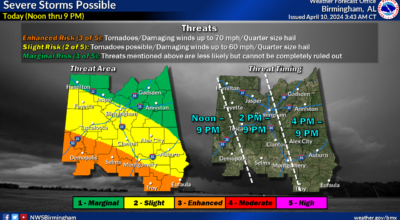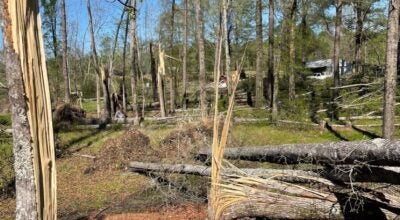Report: Broadband access lagging in Black Belt
Published 12:30 pm Wednesday, October 21, 2020
|
Getting your Trinity Audio player ready...
|
According to the most recent study published by the University of Alabama’s Education Policy (EPC), which follows previous studies focused on unemployment, lack of healthcare, population decline and other issues plaguing the region, the Black Belt “is markedly behind the rest of the state when it comes to internet access.”
While access to reliable internet has become a top priority for political leaders across the country, the COVID-19 pandemic, which left schools, healthcare providers and businesses rushing to implement remote learning, telehealth and work procedures, has only highlighted the need for broader access and affordability, particularly in low-income and rural areas.
The study shows that of the 24 counties considered to be part of the Black Belt – the region’s blurry definition, which some have adamantly asserted should only include the traditional 18 counties, was the subject of an earlier study – all but two, Montgomery and Russell counties, were below the statewide average of 86 percent coverage with internet speeds of at least 100 megabytes per second (mbps), the national average, while half were below the 50 percent coverage rate.
A chart produced by the EPC showed that Dallas County had a coverage rate just under 80 percent, while Perry and Choctaw counties had zero percent coverage of 100 mpbs and Greene County had only .02 percent coverage.
Studying coverage at lower speeds, 25 mbps, researchers found that the result is largely the same in the Black Belt, where only three counties – Montgomery, Bullock and Russell counties – were above the state average of 89 percent coverage, while 10 are at 50 percent or below, which portends an issue of access.
According to EPC Director Stephen Katsinas, Alabama ranks 38th in the nation for broadband access, where only about 44 percent of residents have access to affordable broadband internet service, which is defined as costing $60 or less per month.
In highlighting the problem, Katsinas referenced recent remarks made by Perry County Commission Chairman Cedric Hudson.
“The global COVID-19 pandemic is exposing one of the many problems in poor rural counties like Perry County – intent access is simply lacking or nonexistent,” Hudson was quoted as saying. “[Poor] internet is limiting the knowledge and quality of life for the citizens in Perry County and all rural counties in the state.”
For his part, Katsinas celebrated moves by Alabama Gov. Kay Ivey to expand broadband service across the state via the 2018 Alabama Broadband Accessibility Act, which handed down $9.5 million in grant funding that will be spent in part to expand service in the Black Belt, and noted that elected leaders in the U.S Senate and House of Representatives seem to be “plugged into what the challenges are.”
Additionally, the report noted that the state has thus far allocated $100 million in federal Coronavirus Aid, Relief and Economic Security (CARES) Act funds for “equipment and service for broadband, wireless hotspots, satellite, fixed wireless [Digital Subscriber Line] DSL and cellular-on-wheels,” with an additional $100 million set aside for local education agencies to bolster remote programs and $72 million for higher education.”
And public investments are playing a role too, with a movement currently building among rural electric cooperatives to tie existing electric systems to high-speed fiber networks in order to bring service to rural Alabamians.
The Alabama Rural Electric Association of Cooperatives (AREA) includes 22 member cooperatives across the state, as well as PowerSouth, with 10 Black Belt members among its ranks.
Among those who have already begun bringing fiber internet access to the people in their service areas is the Central Alabama Electric Cooperative, headquartered on Alabama Hwy. 14 between Selma and Prattville.
“Much like how rural electric co-ops paved the way for rural electrification in the 1930s and 1940s, these same community-based organizations have the opportunity to bring rural Alabama into the 21st Century,” the report stated.
Still, Katsinas said, the issue will have to be tackled with state policies aimed both at expanding broadband infrastructure and ensuring that low-income, rural residents, as well as any others struggling to access what has become a necessity in the 21st Century, can afford service.
Exactly what those policies will look like, or whether or not there is the political will to make internet access more affordable among a state legislature that has refused to make healthcare, groceries and other necessities more affordable, is unclear.






